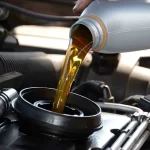
“Spare parts” refer to any unit that needs to be replaced, repaired, or updated due to damage or wear-and-tear. In general, spare parts are made by the same manufacturer as the original units; however, they are slightly modified or customized for your vehicle’s specifications. There are many types of spare parts available, such as spark plugs, clutches, tires, and motors. They are generally sold at automotive specialty stores or through online retailers, as well as through some specialty websites. Although these parts are not usually necessary to maintain the vehicle, they can be extremely important to owners who drive on a regular basis or have unique needs for their car. There are several options when it comes to replacing or repairing spare parts.
A stock part, spare parts, service part or even replacement part, is a replaceable part that remains in stock and is used for either the repair of damaged units or the maintenance of the vehicle itself. The stock part will typically come with a standard warranty, but will also be detailed and marked with the part number so that it is easy to locate and replace should the need arise. Because of the standardized look and feel of most stock spare parts, replacing a damaged part should not be much of a hassle; therefore, it is best to have a few of them on hand. For those who drive infrequently, it may be less costly to purchase a predictive management system that keeps a log of your mileage and stores replacement parts as you use them. This type of system requires no maintenance once your mileage is recorded, and the GPS function records the last 100 miles driven.
Other options include buying an OEM (Original Equipment Manufacturer) part and returning it to the company for a new or a replacement part. When you decide to purchase a new part from an OEM, you are essentially paying the same price as that of a similar repair except that you are purchasing it “off the shelf.” The downside to this method is that, since it is an OEM part and was designed for their product only, it may not work with your vehicle’s specifications and may void its warranty. Some OEI spare parts, such as camshaft seals and hoses, are available in specialty stores or can be ordered online through the manufacturer. In order to ensure a proper fit, they should be shipped and installed by a professional technician.
The alternative for those seeking a little more downtime and money out of their spare parts purchase is to purchase new equipment. Though this will add some cost to the monthly bill, it is much more cost effective in the long term. New equipment generally comes with a limited warranty, though it may vary according to brand and model, and is designed for use in new vehicles only. New parts are also easier to find, which can help those in need of spare parts when there is a need to replace a damaged part quickly.
These two methods of spares acquisition are not mutually exclusive, however. Automobile spare parts manufacturers often offer their own spares and can help those who are seeking to replace damaged or broken parts to find what they need very quickly. This is especially useful if the problem is not a serious problem but rather a cosmetic one. A spares shop can often make up for this loss of profit by selling reconditioned parts at a discount to those who cannot afford new equipment.
Having better control over the inventory of spare parts is one of the reasons why businesses choose to purchase them in the first place. With better control, they are able to avoid having to constantly purchase new parts. Because they are purchased in large quantities, they will be less expensive overall, even when the cost of production goes up. By having better control over their inventory control, businesses can avoid the hassle and expense of constantly purchasing new equipment and can save money and resources when they do purchase.










